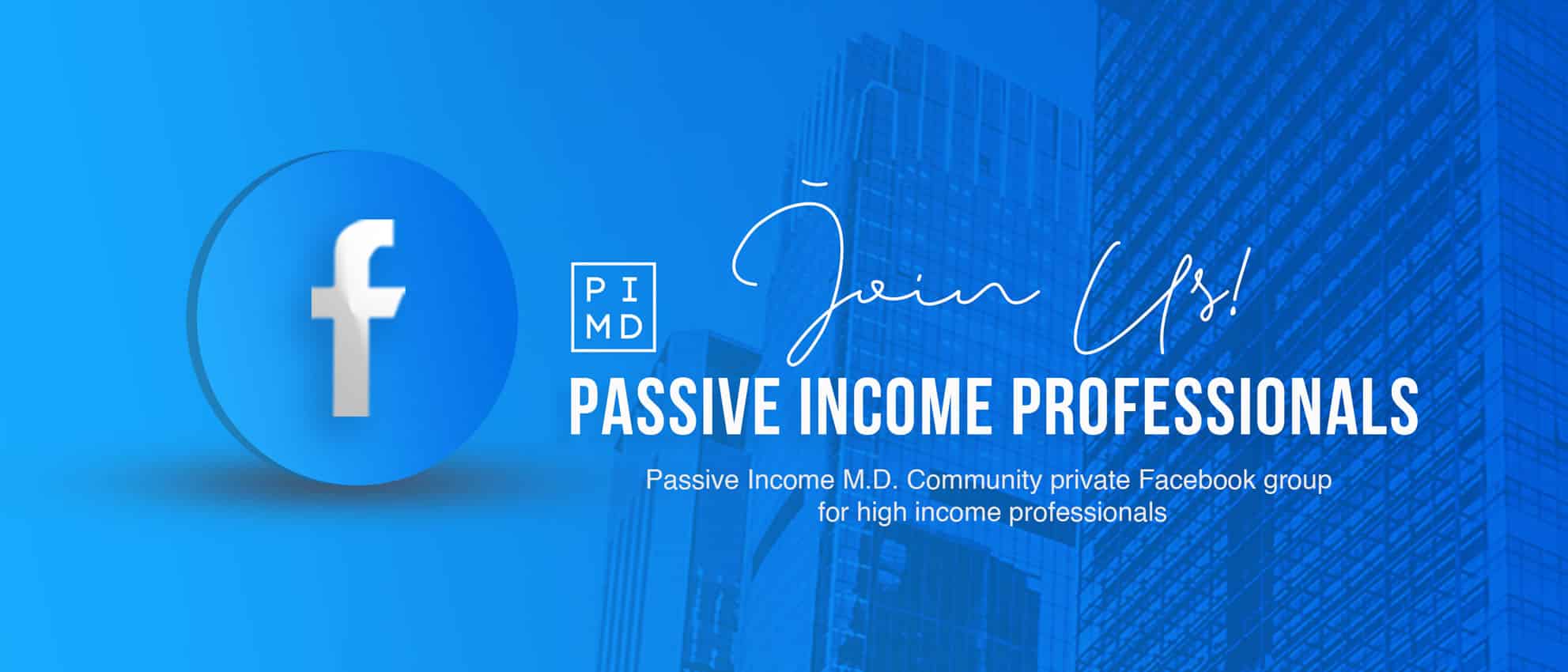
How To Figure Out Your Financial Freedom Number (and What To Do Next)
This post may contain links from our sponsors. We provide you with accurate, reliable information. Learn more about how we make money and select our advertising partners.
The concept of financial freedom is foreign to most physicians. After all, we’re used to seeing patients and billing to create income. Simply put, we trade time for money – if we don’t go to work, we don’t get paid. In fact, most people would be surprised to find out that many physicians actually live paycheck to paycheck.
Throughout our academic lives, we’re taught that if we study hard in college and medical school, work hard in residency and fellowship, and then get a good job, we’ll be set and happy for the rest of our lives. That’s all well and good until we face the realities of medicine today: declining reimbursements decreased autonomy and significant numbers of physician burnout. Even job security in medicine isn’t what it used to be.
That’s why I feel that, as physicians, the concept of pursuing financial freedom is more important today than it’s ever been. Many physicians have felt the burnout that seems to come for us all, but they feel they have no choice but to continue running on the hamster wheel at a furious pace.
What's the Solution?
The solution to all of this is multifactorial. But there’s no doubt in my mind that becoming financially free solves a good number of these problems. If you’re not reliant on your day job for income and it doesn’t dictate the daily financial choices you make, then you can choose to practice how you want, where you want, and for whatever reason you want.
For many, the idea of financial freedom is abstract. So how do we actually make it happen? Well again, there isn’t only one way, but from my own experience, I’ve found that what works for many physicians is to create multiple streams of passive income. This can be done through real estate, businesses, etc.
In order to achieve financial freedom, one of the most important things you can do is to set a concrete, attainable goal. You need to know where you are in your journey and how soon you can realistically attain it. One way to set this goal is by calculating your Financial Freedom Number (FFN).
What Does Your Financial Freedom Number mean?
Your Financial Freedom Number is the point at which your passive income is equal to or exceeds your expenses of living. Once you’ve reached this number, again your day job (being a physician) becomes optional and along with that freedom comes the ability to make your own choices as to how you work and live.
How To Figure Out Your Financial Freedom Number
It simply takes two steps:
1) Figure out all your expenditures for the last 12 months
Some people like to use the last 3-6 months time frame, but I like to use the last 12 months. I believe this creates a better picture of your overall expenditures and evens out the seasonal fluctuations.
I use Personal Capital and it's all automated for me and broken down by categories. However, I know some people like using YNAB or Mint.com. Others like to do it old school and put everything on a spreadsheet.
Make sure to take a look across all of your bank and credit card statements, and account for large cash purchases as well (if you can remember them).
2) Add up all these expenses and simply divide by 12
Doing this will give you your average monthly expenses. This number is also your Financial Freedom Number. If you can hit this number or exceed it with monthly passive income, then you can consider yourself financially free.
Sounds simple… because it is. But what's amazing is that most people don't know what their personal number actually is.
It’ll probably take you about an hour to get this done if you’re doing it by hand. But trust me, it’ll be one of the most effective hours of your life.
Again, we need to know what our goal is. Aimless running doesn’t help. Having a clear vision of the number you want to reach is the best and most effective way to make it happen.
What is the 4% Rule?
After figuring out your Financial Freedom Number, some like to use the “4% Rule” to determine what size portfolio will allow you to be financially free.
The “4% Rule” states that you can withdraw 4% of your portfolio value each year (adjusted for inflation), depending on your allocation, but it should last 30 years with over 95% certainty. The idea is based on the often referenced Trinity Study. Another way to calculate this is to take your yearly expenses and multiply them by 25.
For example, if your expenses add up to $100,000 a year, you simply multiply that by 25, and that tells you that the size of your portfolio needs to be $2,500,000 for you to be considered financially free.
What I Do With My Financial Freedom Number
Well, I invest most of my assets in real estate so the 4% Rule doesn't really apply to me. I also like to build up cash-flowing businesses, like this blog and Curbside Real Estate, and that's not something you can plug into that rule as well.
So in terms of my Financial Freedom Number, the most important thing I measure is the amount of monthly cash flow I receive from streams of income outside of medicine. When that amount of cash flow eventually reached my FFN, I knew that I was financially independent from medicine.
Achieving Financial Freedom
The next step to achieving financial freedom is to take your Financial Freedom Number and determine when you want to hit that goal. The important thing is to make your goal time-bound. When do you want to “retire”?
I've found it's easier if you break things up into smaller bite-sized chunks. For example, let’s say your goal is to be financially free in 15 years. If your FFN is $15,000/month, then that means by Year 5 you should aim to hit a third of that or $5,000/month. That seems much more doable – and it could happen much faster than that.
Now that you have your short-term and long-term goals, you have to figure out how to actually reach those milestones.
As an example, let’s say you decide to use real estate as the vehicle to get you there. Assuming you're able to get a very conservative cash flow of $250/unit per month, you divide your five-year goal ($5,000) by $250, and you’ll get 20. That’s how many rental units you need to hit your short-term goal.
5000/250 = 20 Units
Can you accumulate 20 units in 5 years? Absolutely. In fact, I’ve met people who’ve done that in 1-2 years using a combination of single-family homes to apartment buildings.
Can Your Financial Freedom Number change?
Oh yes, it can definitely change with time. What if you wanted to move to an area with a higher cost of living? Well, your FFN would have to be adjusted higher. What about the cost of education for your children? I always try to account for that when calculating my FFN.
The good news is that your passive income isn’t static as well. The income you receive should also continue to increase with time if you’ve made smart investments. For example, if you have mortgages on properties, and you continue to let your tenants pay them off, at some point those mortgages will be paid, and your income will (almost definitely) multiply.
Not only that, but the underlying assets (like real estate) will continue to increase in value as well, providing more security and comfort. In this way, you'll be set for life.
Conclusion
If given the freedom of choice, I have the suspicion that many of you would still continue to work as physicians – but on your own terms. Maybe you’d continue to work full-time because you love it. Some physicians might go part-time and gradually retire as I’ve started to do. Others might quit altogether and pursue other passions. Whatever you decide to do, the fact that you are able to make those choices means that you’ve already succeeded.
Starting with the end goal in mind helps to set the course and allows you to correct it along the way. Figuring out your Financial Freedom Number makes that goal even more specific, and gives you a concrete metric to achieve. But you also need to set a timeline for when you want to make that happen. Break it up into chunks and set shorter-term goals.
Of course, none of this will do any good if you put it off. Ultimately, the key is to get started as soon as possible. It may seem like a long journey, but it all begins with a single step.

Disclaimer: The topic presented in this article is provided as general information and for educational purposes. It is not a substitute for professional advice. Accordingly, before taking action, consult with your team of professionals.

